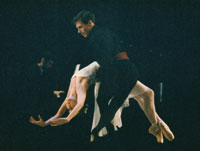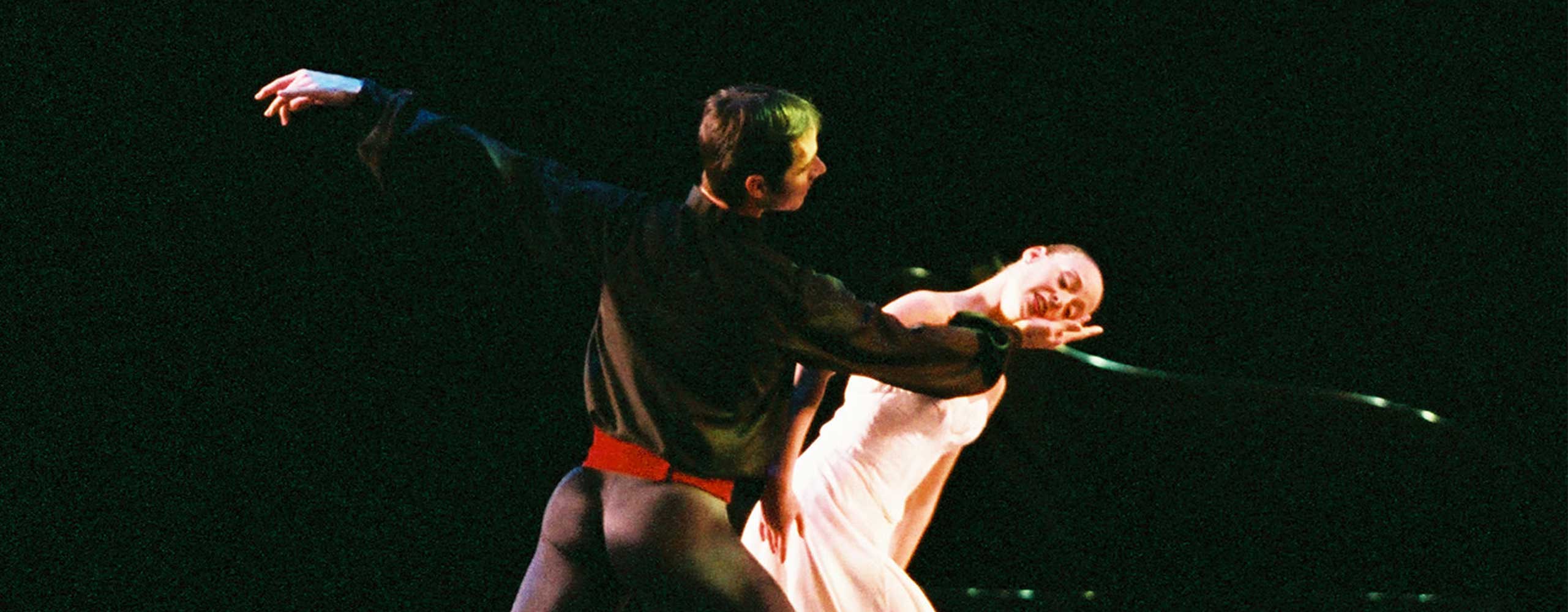
Choreography: Todd Bolender
Music: Frederic Chopin
Costume Design: Russ Vogler
Born near Warsaw in 1810 to a French father and Polish mother, Frederic Chopin exemplified the Romantic movements in Poland. He combined in his works expressions of yearnings for independence, the influence of European classicism, and the accents and modalities of authentic Polish folk music. The commingling of virtuosic skills as a pianist (a bright and brilliant prodigy at the age of eight) and dramatic originality in composition, has resulted in a legacy of music ceaselessly magnetic, enticing to generations of choreographers.
The lure of mazurka, waltz, etude and tarantella, inspired Todd Bolender to create this ballet in 1983 for a benefit performance. The occasion was the gala opening of a Kansas City Specialty store, a glittering event. Conceived in that instance as an intimately-scaled salon piece, the work has expanded. It is both larger and longer, but the core remains. The music, and similarly the movement, for ten dancers, is, by turns, breezy, passionate, noble, dramatic. The dances are sometimes reminiscent of the courtly dances of the seventeenth century, sometimes fueled by stylized intensity. All are lit from within by the capacity for expressiveness which made the piano and the Romantic period synonymous.
The work opens dramatically with the “Prelude in F Minor.” From there it continues in the collected spirit of a dancing party, through the pas de deux, the lovely and familiar lyricism of the “Waltz in A Minor.” A vibrant “Marzurka in B Major” for five boys is followed by the pas de quatre and the pas de deux of two “Waltzes,” both in A flat Major. The dancers progress through the lyrical “Etude in A flat Major” to a brilliant “Tarantella,” the pyrotechnical summation of the dance, and the party.
Plotless in the honored tradition of American Classical dance, the work is collected visually by the presence onstage of The Pianist. Not Chopin, nor his ghost, there is nevertheless suggestion of entwined talents which gives the work wholeness, and makes it complete.
World Premiere: Mary 15, 1986, Kansas City Ballet, Lyric Theatre, Kansas City, Missouri
